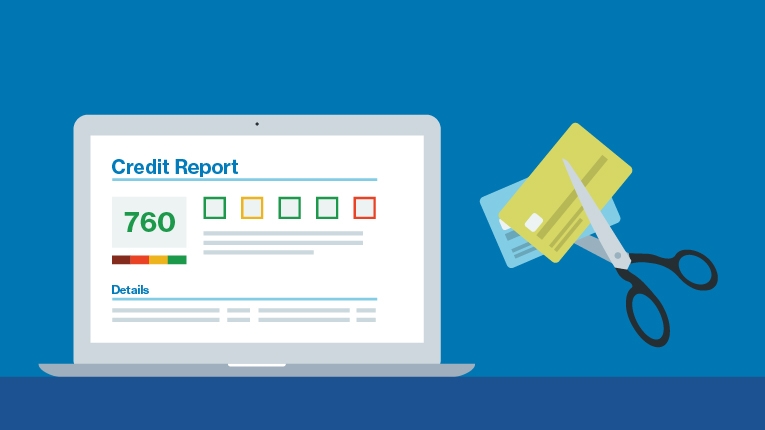13 DIY home repairs you can handle yourself

Pride of homeownership also means managing (and paying for) what can often feel like an insurmountable list of repairs and improvements. Sometimes, it's difficult to know when to DIY a home repair project or find a handyman or other professional better equipped to handle it. Learn which home improvement projects are simple enough to tackle on your own and when to call in the experts.
13 simple DIY home repairs
With a bit of planning and a lot of elbow grease, you might be surprised at what you can manage by yourself. Just make sure to consider the time, materials, and tools you’ll need to ensure success and keep your costs from skyrocketing.
1. Fix leaky faucets and pipes
According to the Environmental Protection Agency (EPA), household leaks account for nearly 900 billion gallons of wasted water each year nationwide. The good news? The culprits are often worn-out washers, bathroom faucets, and gaskets, which are relatively easy to replace with the right tools. You're already halfway there if you have an Allen wrench, pliers, and a Phillips-head screwdriver.
2. Clean gutters
If you (or a friend) can climb a ladder, you can clean the gunk out of your gutters without calling in the cavalry. Don’t forget to check the downspout, which can get clogged with leaves and other debris.
3. Remove water stains from a ceiling
Instead of repainting your entire ceiling to cover up a small water-stained spot or area, try bleaching it out first. Mix a solution of water and 10% bleach in a spray bottle and wait a day or two. If it's an old stain, try using mildew remover from the hardware or grocery store. Both methods usually remove stains within the next day and can be used on flat or textured ceilings.
4. Replace caulking
Save up to 10% on your annual energy bills by removing and replacing old, dried-out caulking around bathtubs, faucets, windows, and more. Not only will fresh caulk prevent drafts, water leakage, and damage, but it’s also a fairly simple undertaking. There are many tutorials with step-by-step instructions that will have you caulking like a pro in no time.
5. Unstop a toilet
If your toilet isn't flushing, you can usually repair it yourself by adjusting or replacing the chain and flapper in the tank. Got a stubborn clog? Loosen it up by pouring some dish soap and letting it soak before using your plunger.
6. Unjam a garbage disposal
Most of us are used to diving our hand into the disposal to remove an errant bottle cap or other hard object from the garbage disposal. When something really gets stuck in the impeller blades, it can jam them up and cause them to freeze. One simple way to clear this type of obstruction is with a 1/4-inch hex wrench. Insert it into the hex-shaped hole on the underside of the disposal and crank it a few times in both directions to free up the blades. Just make sure to disconnect your disposal first.
7. Weatherstrip drafty doors and windows
Weatherstripping drafty doors and windows is an easy and cost-efficient way to save energy and make your home more comfortable. And in most cases it doesn’t take a professional. Online tutorials show just how easy it is to DIY without employing help.
8. Patch wall holes
Repairing nail holes and other minor holes in your drywall is another project that virtually anyone can do. Use a spackle knife to cover the hole with drywall mud, use sandpaper to smooth it out, let it dry, and then add a fresh coat of paint.
9. Paint interior walls
A DIY paint job doesn’t take special skills or know-how, but it does take patience and preparation. Before tackling any paint project, make sure to cover all furniture with a drop cloth and arm yourself with plenty of painter’s tape.
10. Touch up old appliances
Spray-on paint like Rust-Oleum for small items that don’t generate heat can give your appliances the renovation they need without fully refurbishing. For larger or heat-producing appliances, try liquid stainless steel paint.
11. Reupholster furniture
Most people reupholstering furniture couldn’t possibly be a do-it-yourself project. Ana Verdi, a designer at Thompson Fine Home Renovation, says “anything with straight lines” can be easily reupholstered without professional help. In fact, the fanciest tool you’ll need is a staple gun, and there are tons of tutorials to get you started.
12. Silence a squeaky door hinge
Although WD-40 is a great lubricant for many purposes, this product can attract dirt and turn the hinge pin black when used on interior or exterior door hinges. Instead, try quieting a squeaky door by reaching for petroleum jelly, bar soap, or olive oil. All of these are naturally lubricating products that are likely already on hand around the house.
13. Restore a deck
Spruce up your neglected deck for summer by slathering it with a fresh new stain. For basic repairs, check out tutorials online to see if you can tackle them by yourself before calling in a pro.
11 home projects to leave to the pros
We love the DIY spirit, but some home repair projects call for more than an online tutorial and a trip to the hardware store. And knowing when to do it yourself and when to call a pro is an essential part of homeownership. The last thing you want is to find yourself out of money and in over your head.
1. Foundation repairs
Unless you’re a structural engineer, you’ll have no way of really knowing how deep your foundation problems go. DIY fixes like adding more concrete or replacing old floor boards may help in the short term, but in many cases you’ll be treating a symptom, not the cause. Your foundation is the most important part of your home, so call in an expert to make sure the job is done right.
2. Electrical upgrades
Installing a dimmer switch is one thing—handling faulty electrical wiring is another. And the danger isn’t in getting an unpleasant shock. In the US, there are 51,000 home electrical fires every year. That’s more than enough reason to play it safe and call in an electrician.
3. Gas leaks
If you notice a leak in your gas line, call the gas company right away and don’t attempt to seal it yourself. Carbon monoxide poisoning is typically caused by incorrectly installed gas lines or appliances, so attempting a DIY fix isn’t worth the risk. Plus, most gas providers will send someone to diagnose and fix the issue for free.
4. HVAC repairs
Air conditioners and furnaces are complex instruments made of gears, gasses, chemicals, and electricity. Even one small error could throw the whole system off and leave you with a hazardous mess. Contact a certified HVAC specialist to take care of any necessary replacements, upgrades, or repairs.
5. Major plumbing
Though many plumbing repairs can be done yourself, it’s best to call in a professional for bigger jobs like replacing old underground piping or making major sewer repairs. Otherwise you may find yourself with a much bigger problem on your hands, like mold damage or flooding.
6. Asbestos removal
According to the US Consumer Product Safety Commission, the best thing to do with asbestos material that’s in good condition is to leave it alone. If the material is intact and undisturbed, you won’t need to worry about harmful asbestos fibers getting released. If the asbestos is damaged or needs to be moved for an upcoming home repair, call in an expert who can safely remove it.
7. Tree removal
It’s not surprising that extreme heights and chainsaws can be a lethal combination in the wrong hands. If you don’t have proper safety gear or a working knowledge of tree physics (yes, that’s a thing), leave the tree cutting to the pros.
8. Painting the exterior
Adding a fresh coat of paint to your home’s exterior is a great way to increase your curb appeal, but it’s not the same as painting the walls. Exterior home painting means also dealing with trim, soffits, rake boards, and sometimes siding. “Don’t paint your house yourself unless you have the time, tools, skills, and stamina to do the work,” says home improvement expert Don Vanderhort. “Depending on the size and height of your house and the condition of the existing siding, preparing and painting a house on your own can be a tedious, difficult job.”
9. Removing walls
Is the wall load-bearing? If you don’t know, don’t attempt to remove it on your own. You don’t want to wake up to a caved-in ceiling, or worse.
10. Replacing windows
On paper, replacing old windows sounds fairly straightforward. A poorly executed window installation could lead to higher energy bills, not to mention water leaks and mold damage. Call in an expert and call it a day.
11. Any project that would void a warranty
Many manufactures have strict warranty guidelines, so make sure to do your research before embarking on a new DIY home improvement job. Manufacturers of HVAC systems, roofing supplies, paint, refrigerators, and concrete may be able to void your warranty if you don’t follow their repair guidelines.
Home repairs for renters: Know your rights
According to Ann O’Connell, attorney and legal editor at Nolo.com, “Under most state and local laws, landlords must offer and maintain housing that satisfies basic habitability requirements.” Heat, water, electricity, adequate sanitation, and a safe living environment are all things your landlord is required to maintain. In exchange, it’s your responsibility as a renter to take good care of your unit.
Simple fixes like unclogging a drain pipe or steam cleaning a dirty carpet are projects you can safely DIY. Just make sure to check with your landlord or property manager first. Without prior approval, you may run the risk of losing your security deposit.
Have a serious or emergency repair that your landlord is refusing to cover? You may be protected under your state’s “repair and deduct” laws. Consult a landlord-tenant attorney if you think you may be eligible.
Paying for your home repair project
Whether you’re ready to try DIY or calling in a pro, you’ll need to decide how you want to pay for your project. You may have the cash flow to pay for smaller projects out of pocket, but if you’re making major repairs or significant upgrades, a home improvement loan could be a smart financial decision.
With LendingClub Bank you could receive a personal loan at a fixed rate that is lower than your credit card, helping you save money over the long term. Plus, you can check your rate for free and see your potential loan offers in seconds without impacting your credit score.
DIY Home Repair FAQs
What are the most common DIY home repairs?
Fixing squeaky doors and windows, patching drywall, unclogging toilets, and painting interior walls are all popular projects that can be safely undertaken by DIYers. Make sure you have the proper tools and enough time to do the job well, and remember, there’s no shame in calling a pro if you get stuck.
Where can I find a pro if I need one?
First, you’ll need to determine whether the job calls for a licensed contractor or a handyman. You’ll also want to research whether permits are required and if the project involves an existing warranty.
Once you’ve decided on what you need, there are a number of avenues to explore. One of the best ways to find the right person for the job is to ask trusted friends and family members for a reference. You can also explore free services like HomeAdvisor or Thumbtack, both of which offer reviews and free cost estimates.
How do home improvement loans work?
A home improvement loan is a personal loan that can be used to pay for home repairs and improvements large and small, from energy-efficient upgrades, to kitchen remodels, to landscaping and more. Collateral is not required, and, unlike revolving credit card debt, a personal loan offers a fixed rate and payments that are repaid over a set length of time.
You’ll know exactly how much you’ll pay each month and for how long. This transparency can give you more control over your budget and may even save you money.




